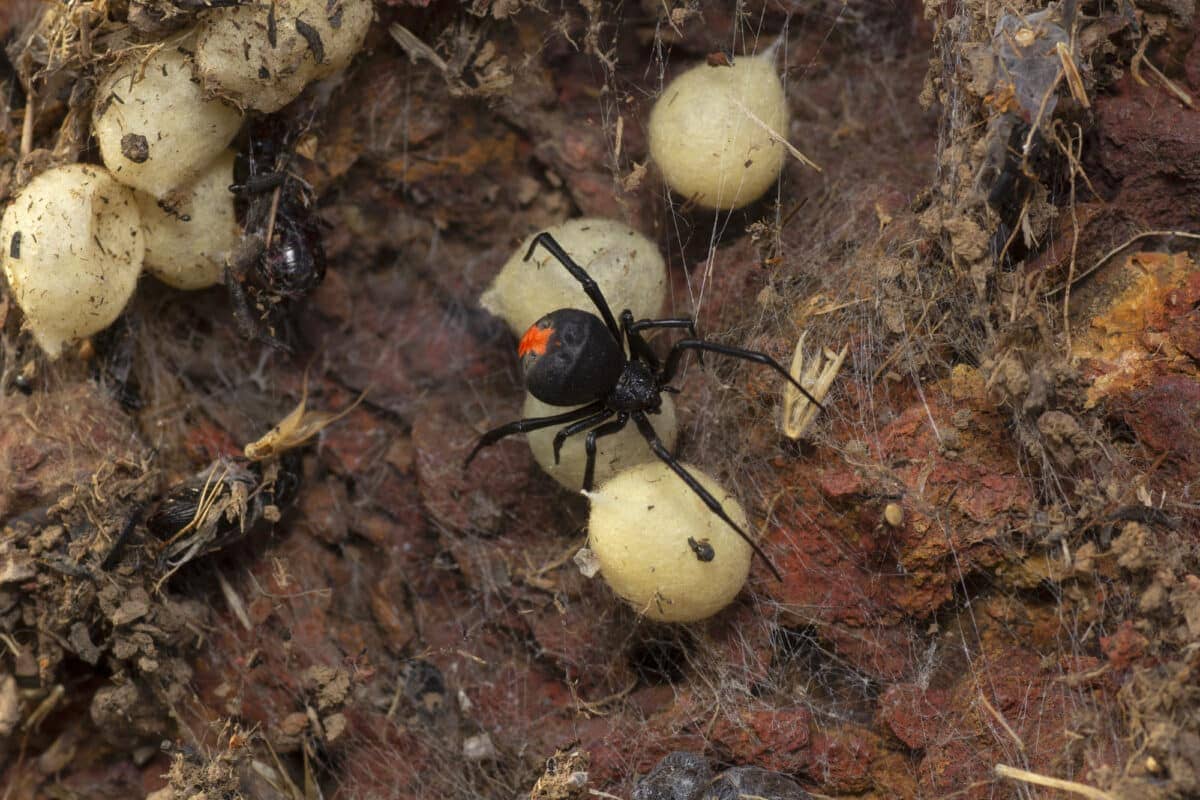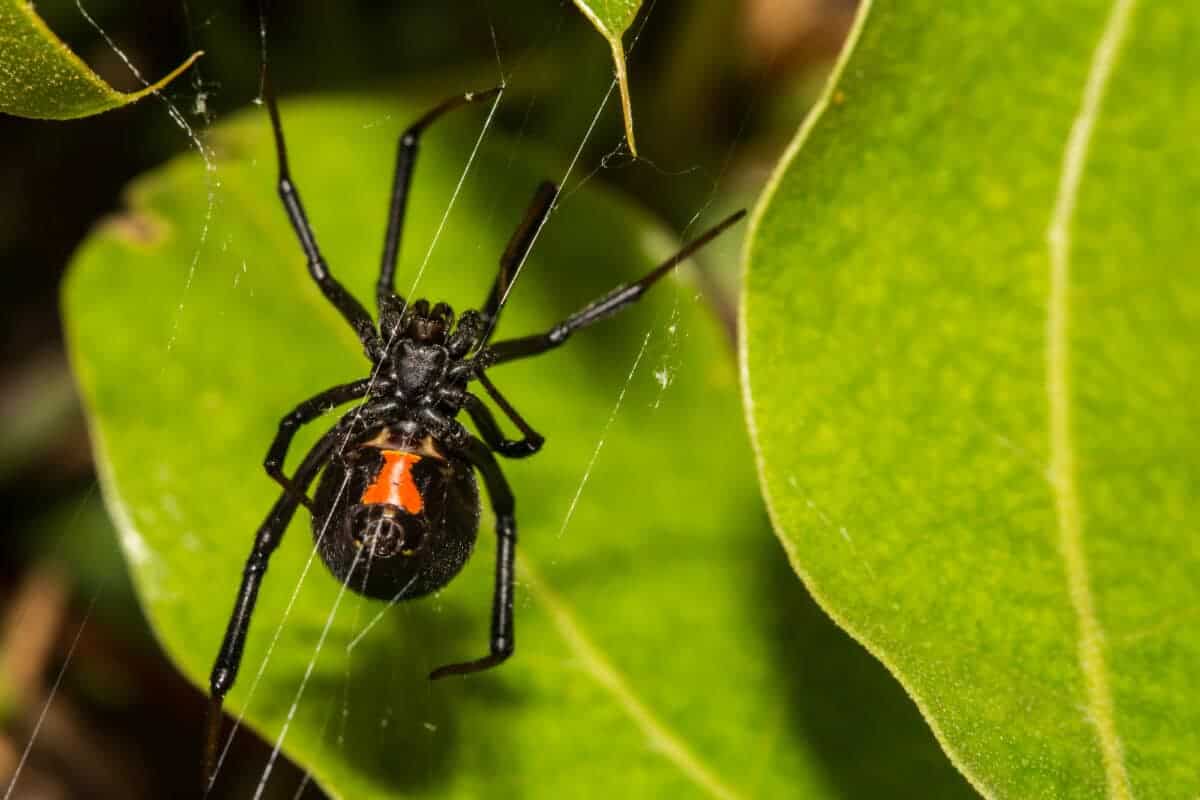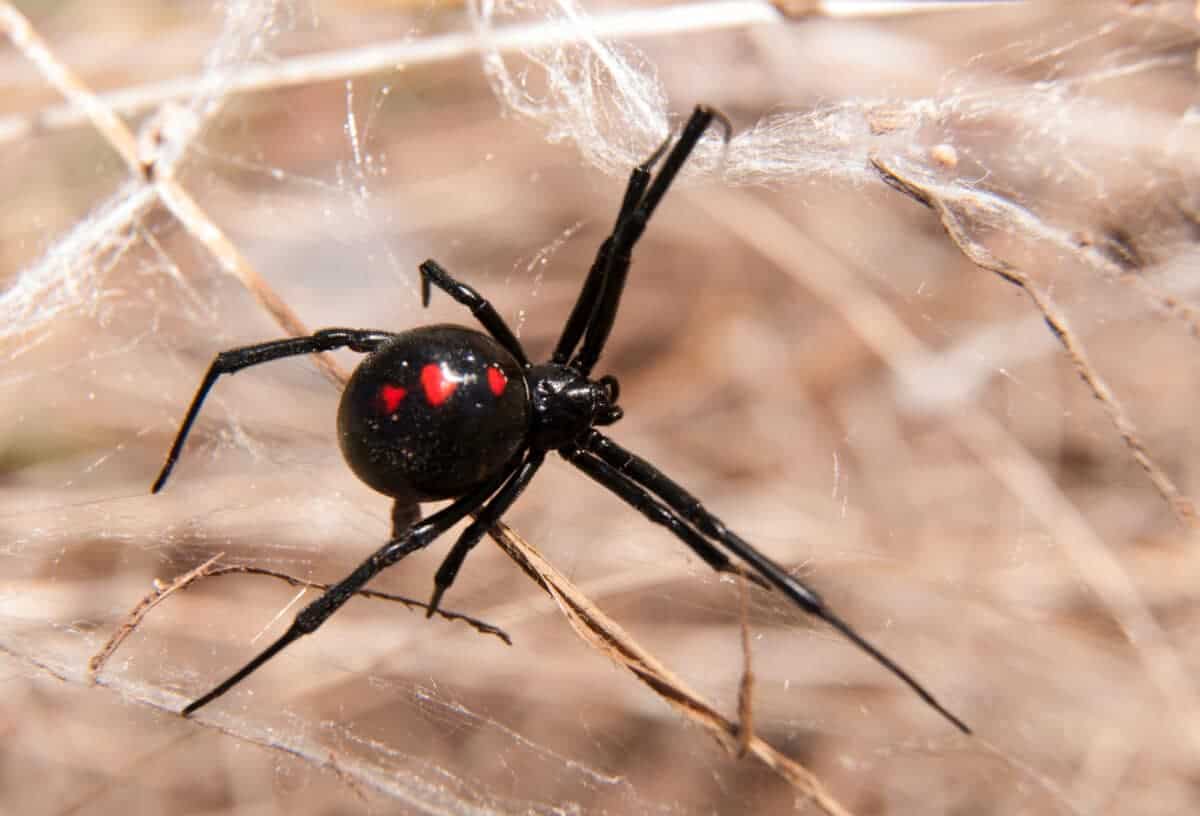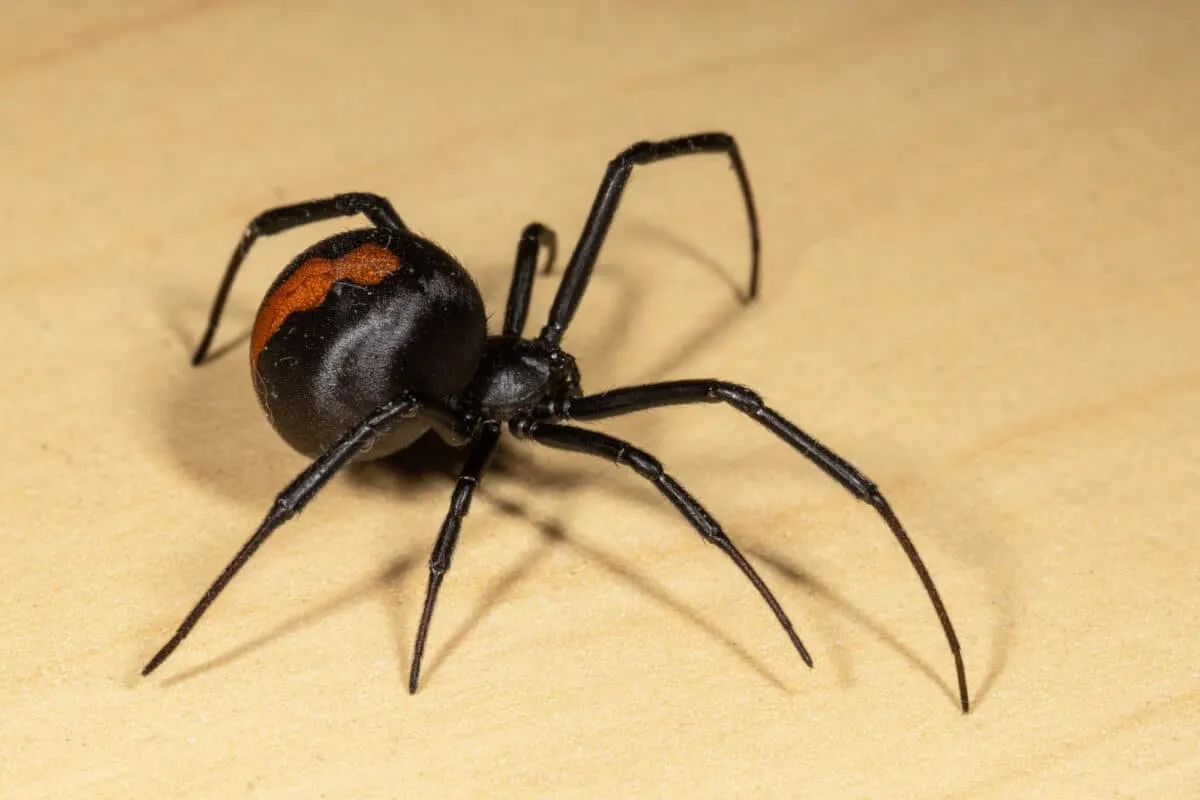The redback spider (Latrodectus hasselti) is a notorious arachnid native to Australia, known for its distinctive red markings and potent venom. While encounters with these spiders are relatively common, their bites can pose potential health risks to humans.
In this introduction, we will explore the intriguing topic of redback spider bites, exploring the symptoms, effects, and medical considerations associated with their venomous bite.
With a focus on promoting awareness and understanding, we will uncover the proper steps to take in the event of a redback spider bite, including first aid measures and seeking medical attention.
By familiarizing ourselves with this aspect of Australia’s diverse wildlife, we can better appreciate the importance of coexistence and take necessary precautions to mitigate potential risks while admiring these fascinating but potentially hazardous creatures in their natural habitats.
Jump ahead to any section below!
What is A Redback Spider?
The redback spider is a venomous arachnid native to Australia. It’s recognizable by its distinctive red stripe on its back, hence the name “redback.” These spiders are common in urban areas, inhabiting dark corners or hiding spots. They are considered incredibly dangerous, as their bite can cause severe pain, muscle weakness, and, in rare cases, even death.
While redback spiders are not aggressive, it’s important to exercise caution to avoid potential harm. If bitten, seek medical attention immediately – the venom can spread rapidly throughout the body and cause significant damage.
Habitat And Physical Characteristics

Red back spider with eggs. Image via Deposit Photos
The redback spider is Australia’s highly venomous arachnid endemic. Its habitat ranges from urban to natural environments, commonly found in dark, warm, and dry places. Adult redback spiders can grow to the size of a fingernail and are easily recognizable by their black body with a distinctive red dorsal stripe on their abdomen. Females have a much rounder body, capable of producing lethal venom.
Despite their small size, these spiders are a major cause of concern for individuals who work or spend extended periods in their habitats. Redbacks adapt exceptionally to their environment, but taking care of them should always be a priority.
Check out: Huntsman Spider Bite.
Signs And Symptoms Of A Redback Spider Bite
A Redback Spider’s bite can be both painful and potentially dangerous. These spiders are commonly found in Australia and are identified by the distinctive red stripe on their abdomen. The initial symptoms of a redback spider bite include pain, swelling, and redness around the bite site. Other symptoms can appear within hours of the edge, including nausea, headache, sweating, and muscle weakness.
In severe cases, a redback spider bite can cause respiratory distress or paralysis. It’s important to seek medical attention immediately if you suspect a redback spider has bitten you, as prompt treatment can prevent complications and facilitate a faster recovery.
First Aid For Treating A Redback Spider Bite

First and foremost, you should remain calm and seek medical attention immediately. While waiting for medical assistance, you can begin to mitigate the symptoms of the bite. Applying a cold pack or ice to the affected area can help alleviate pain and reduce swelling.
It’s crucial to avoid any strenuous activities that might spread the venom further throughout your body. Avoid sucking out the venom or applying a tourniquet, as with any spider bite, as these methods have been ineffective and dangerous. By properly; youing a redback spider bite, you can reduce the chances of more severe symptoms and help speed up the recovery process.
Check out: Birman Cat.
How To Prevent A Redback Spider Bite
Australia has many potentially dangerous animals, including the redback spider. The venom of this spider can be harmful and even deadly if left untreated. Prevention is key when it comes to avoiding a redback spider bite. The first step is eliminating spider habitats around your home, such as piles of rubbish or debris.
Secondly, wear protective clothing and gloves when working outside, especially where spiders may be hiding.
Finally, if you do come into contact with a redback spider, be sure to seek medical attention immediately. It’s always better to be safe than sorry about the potential dangers of redback spiders.
Medical Treatments Available For Severe Bites

Redback on a web. Image via Deposit Photos
Medical treatments for painful bites are available to individuals who have bitten other animals, including dogs, snakes, and spiders. These treatments typically include antibiotics to prevent infection and rabies vaccinations when necessary.
In addition, tetanus shots may also be given to help prevent complications. If the bite is severe, surgery may be necessary to clean the wound and promote healing.
Depending on the bite type and the injury’s severity, additional medications or treatments may be needed. It is important to seek medical attention immediately if you have been bitten, as infections and other complications can arise if left untreated.
Seeking Medical Assistance For A Redback Spider Bite
Spider bites are common in some parts of the world, and It is no different in Australia. A redback spider bite is one of the most common types of spider bite here. Many of these bites are not serious and can be treated with over-the-counter medications, but certain symptoms indicate you should seek medical attention right away.
These include muscle weakness and severe pain. If you experience these symptoms after being bitten by a redback spider, it is important to seek urgent medical assistance. It is important to remember that prompt medical attention is the key to a speedy and full recovery from a spider bite.
Frequently Asked Questions
Seek immediate medical attention if you experience symptoms like severe pain, nausea, or muscle weakness.
While deaths from redback spider bites are rare, severe cases can lead to complications, especially in vulnerable individuals.
Reduce the risk of encountering redback spiders by keeping outdoor areas clean, wearing protective clothing, and shaking out items before use.
Key Points
| These spiders are common in urban areas, inhabiting dark corners or hiding spots. |
| A bite wound from a Lesser black-backed gull can be a painful and potentially serious injury, but there are several treatment options available. |
| The initial symptoms of a redback spider bite include pain, swelling, and redness around the bite site |
| In severe cases, a redback spider bite can cause respiratory distress or paralysis. |
| If the bite is severe, surgery may be necessary to clean the wound and promote healing. |
Wrapping Up
Informative video on the Redback Spider
Overall, if you ever see a redback spider, it may be a good idea to leave it alone and admire it from afar. About 10,000 redback spider bites are reported annually in Australia, and while you might not think of them as dangerous, they can still cause severe medical complications.
If you or someone you know does get bitten by a redback spider, seek medical attention immediately so that the venom can be neutralized with an anti-venom or other medications prescribed by a doctor.
Research is ongoing about the poisonous venom gathered from redback spiders, but what we know is that this spider – while scary – can be contained with the right knowledge on how to handle it best. Knowing when to leave these spiders alone and when to get help is key in managing potential threats from them.
If you enjoyed this article, see below for related article links!
Next up:
- Sharp-Nosed Pit Viper
- Amur Leopard: World’s Most Endangered Big Cat
- Anaconda vs. Asian vine snake
- Alaskan Malamute Vs. Bearded Collie
- Bengal Tiger Vs. Western Diamondback Rattlesnake
- Bernese Mountain Dog
- The Greenland Shark
- The Largest School of Spinner Dolphins
- Whale Sharks
- Tiger Shark Encounters
- Watch: Lizard Greets Man like a Dog! - April 25, 2024
- Mama Deer Is So Worried About Her Baby - April 25, 2024
- Watch Innocent Baby Bird Walks up to Leopard – Wild Ending! - April 25, 2024


